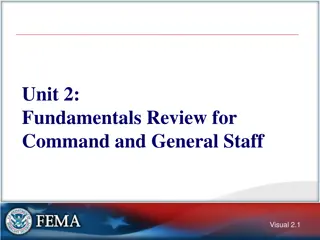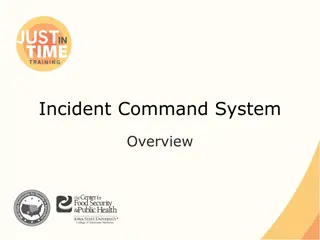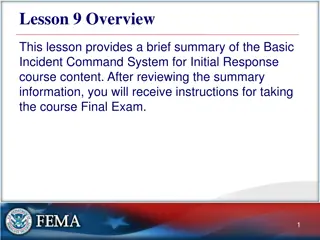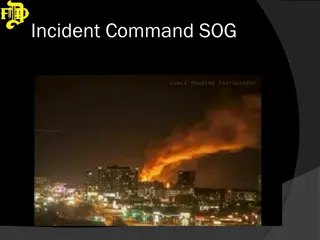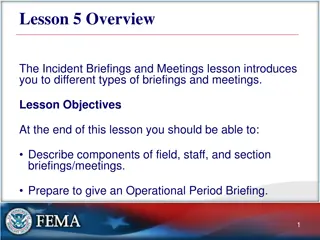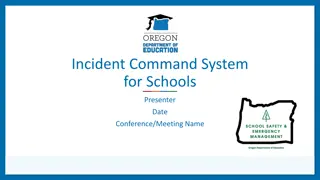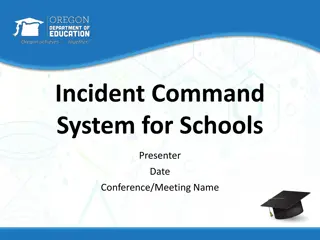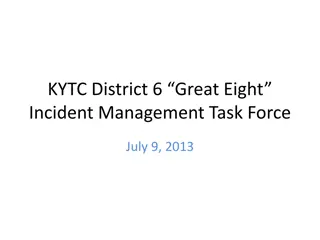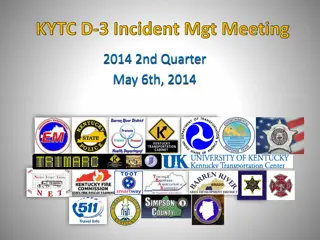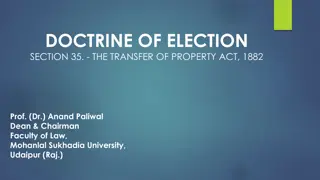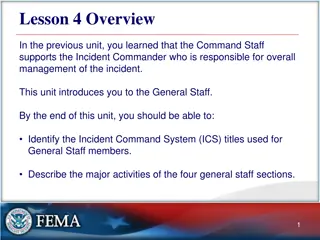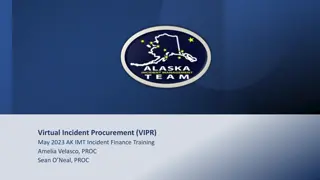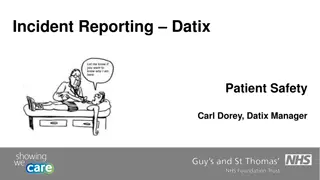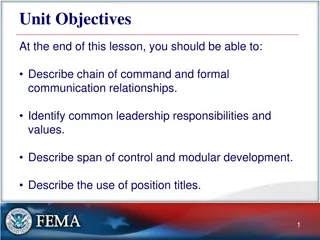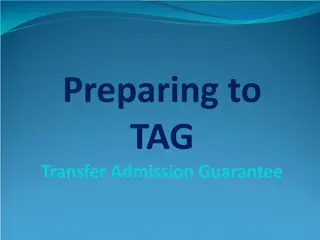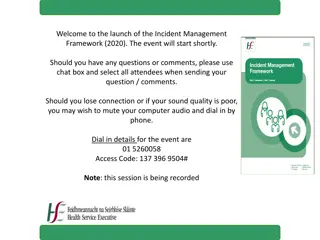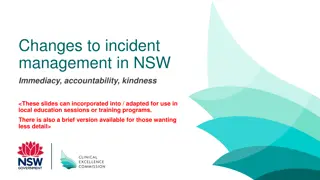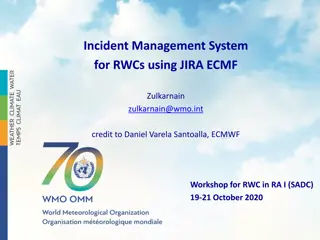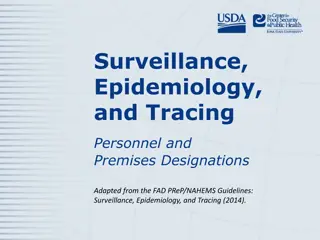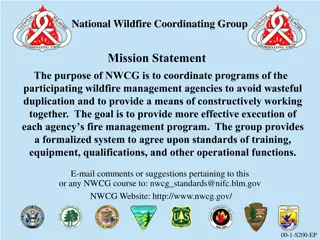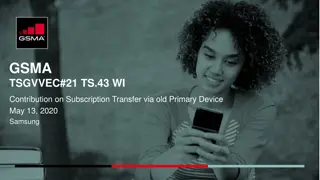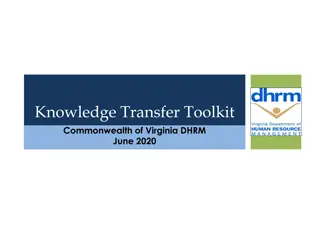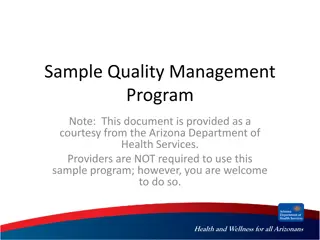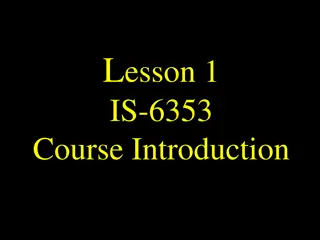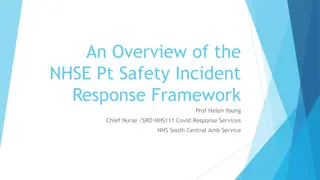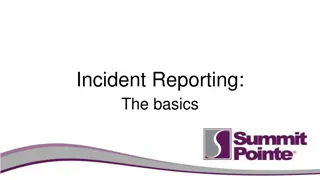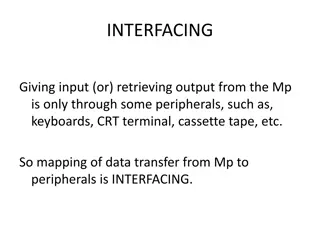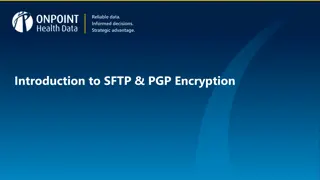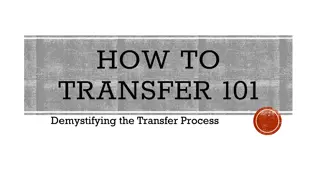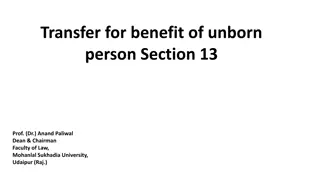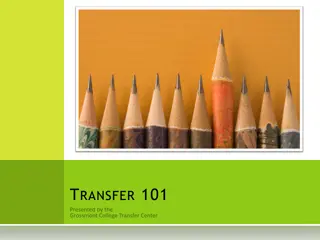Understanding Transfer of Command Procedures in Incident Management
The Transfer of Command lesson delves into the process of shifting incident command responsibilities, outlining reasons for transfer, and discussing how a more qualified individual's arrival does not always necessitate a change in command. The lesson emphasizes the importance of face-to-face transfer procedures and thorough briefings to ensure safe and effective operations continue seamlessly. Thought-provoking questions challenge understanding of command transfer scenarios.
Download Presentation

Please find below an Image/Link to download the presentation.
The content on the website is provided AS IS for your information and personal use only. It may not be sold, licensed, or shared on other websites without obtaining consent from the author. Download presentation by click this link. If you encounter any issues during the download, it is possible that the publisher has removed the file from their server.
E N D
Presentation Transcript
Lesson 7 Overview The Transfer of Command lesson introduces you to transfer of command briefings and procedures. Lesson Objectives At the end of this lesson, you should be able to: Describe the process of transfer of command. List the briefing elements involved in transfer of command. 1
Transfer of Command Transfer of command is the process of moving the responsibility for incident command from one Incident Commander to another. 2
When Command Is Transferred Transfer of command may take place for many reasons, including when: A jurisdiction or agency is legally required to take command Change of command is necessary for effectiveness or efficiency Incident complexity changes There is a need to relieve personnel on incidents of extended duration Personal emergencies arise (e.g., Incident Commander has a family emergency) The Agency Administrator or Jurisdictional Executive directs a change in command 3
Discussion Question If a more qualified person arrives on the scene, does this mean a change in incident command must occur? Why or Why not? 4
A More Qualified Person Arrives The arrival of a more qualified person does NOT necessarily mean a change in incident command. The more qualified individual may: Assume command according to agency guidelines Maintain command as it is and monitor command activity and effectiveness Request a more qualified Incident Commander from the agency with a higher level of jurisdictional responsibility 5
Transfer of Command Procedures One of the main features of ICS is a procedure to transfer command with minimal disruption to the incident. This procedure may be used any time personnel in supervisory positions change. Whenever possible, transfer of command should: Take place face-to-face Include a complete briefing that captures essential information for continuing safe and effective operations The effective time and date of the transfer of command should be communicated to all personnel involved in the incident. 6
Discussion Question What would you include in a transfer of command briefing? 7
Transfer of Command Briefing Elements A transfer of command briefing should always take place. The briefing should include: Situation status Incident facilities Incident objectives and priorities Incident communications plan Current organization Incident prognosis, concerns, and other issues Resource assignments Resources ordered and en route Introduction of Command and General Staff members 8
Incident Briefing Form (ICS Form 201) Agency policies and incident-specific issues may alter the transfer of command process. In all cases, the information shared must be documented and saved for easy retrieval during and after the incident. The initial Incident Commander can use the ICS Form 201 to document actions and situational information. For more complex transfer of command situations, every aspect of the incident must be documented and included in the transfer of command briefing. 9
ACTIVITY 7.1: TRANSFER OF COMMAND Activity Purpose: To give students the opportunity to identify the elements that should be included in a transfer of command briefing. Time: 10 minutes Instructions: Working individually: 1. Review the Emerald City Flood update provided in your Student Manual. 2. Review the list of briefing elements and check the items that should be included in the transfer of command briefing. 3. Be prepared to share your answer in 5 minutes. Incident Update: Lets return to the Emerald City Incident. It is now 1800 and the water level is still rising. You are relieving the current Incident Commander for the next operational period. Review the list below and check the items that should be included in the transfer of command briefing. 10
Lesson Completion You have completed the Transfer of Command lesson. You should now be able to: Describe the process of transfer of command. List the briefing elements involved in transfer of command. The next lesson will be an activity that provides practice in applying the concepts discussed in this course. 11


